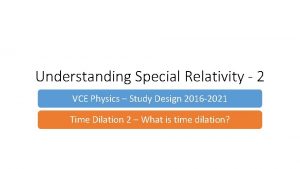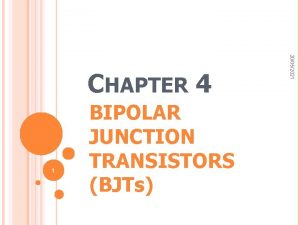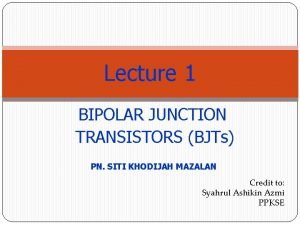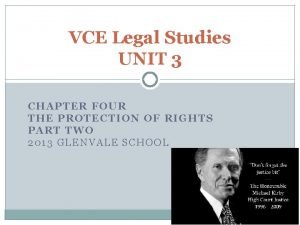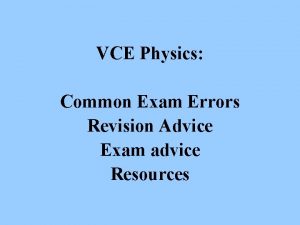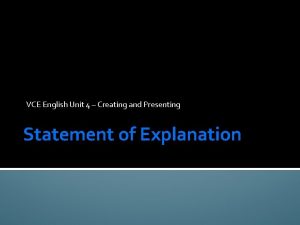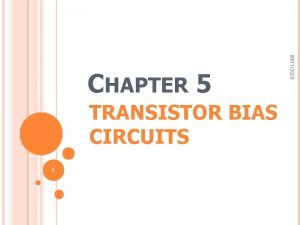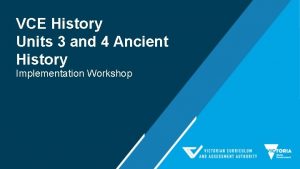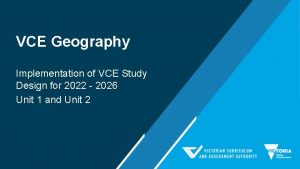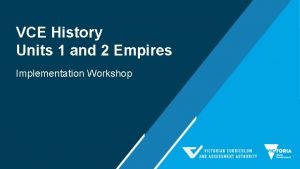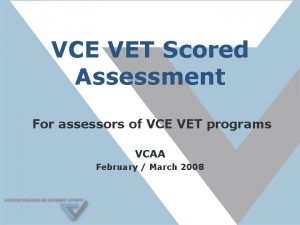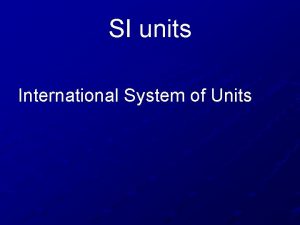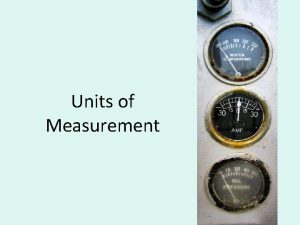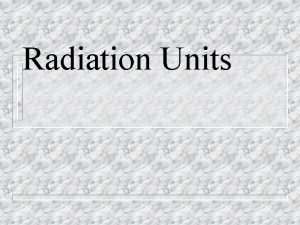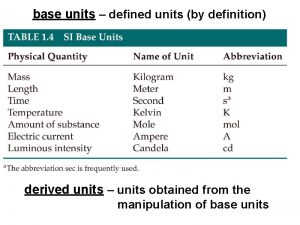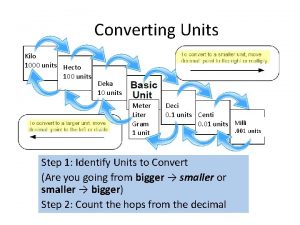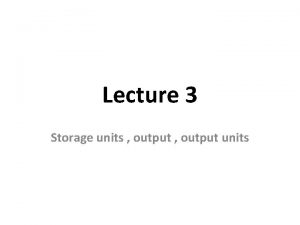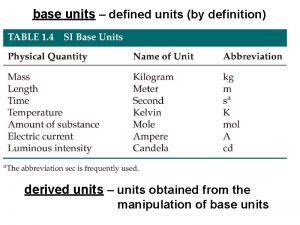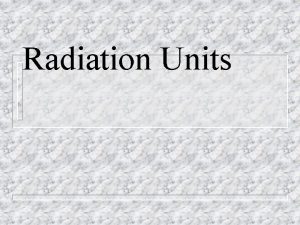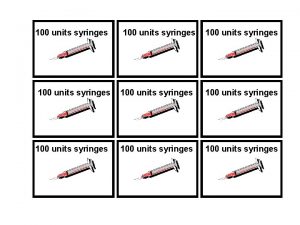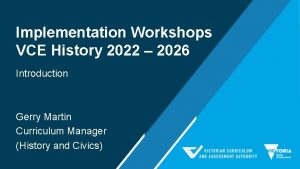VCE History Units 1 2 Ancient History Implementation












































- Slides: 44

VCE History Units 1 - 2 Ancient History Implementation Workshop

Acknowledgment of Country I would like to acknowledge the traditional custodians of the many lands across Victoria on which each of you are living, learning and working from today. For myself and those of us in the Melbourne metropolitan area, we acknowledge the traditional custodians of the Kulin Nations. When acknowledging country, we recognise Aboriginal and Torres Strait Islander peoples’ spiritual and cultural connection to country and acknowledge their continued care of the lands and waterways over generations, while celebrating the continuation of a living culture that has a unique role in this region. I would like to pay my respects to Elders past, present and emerging, for they hold the memories, traditions, culture and hopes of all Aboriginal and Torres Strait Islander peoples across the nation, and hope they will walk with us on our journey.

Outline • • • At a glance Features of Units 1 and 2 Ancient History Overview of the areas of study Teaching ideas Questions

At a glance Unit 1 Ancient Mesopotamia Unit 2 Ancient Egypt Unit 2 Early China Area of Study 1 Discovering civilisation Egypt: The double crown Ancient China Area of Study 2 Ancient empires Middle Kingdom Egypt: Power and propaganda The early dynasties

Overview of changes • Refinement of outcomes to focus on historical thinking concepts • Refinement of key knowledge stems to focus in core concepts • Key knowledge has been unpacked with additional knowledge examples for illustration.

Big Planning Ideas Flexible: • Unit 1 Mesopotamia – Unit 2 Early China – Unit 3 Greece – Unit 4 Rome Creative: • Unit 1 Empires – Unit 2 Egypt – Unit 3 New Kingdom Egypt – Unit 4 Greece Aim: • Student focus and appeal in planning

Unit 1: Ancient Mesopotamia Area of Study One Discovering civilisation Outcome 1 Explain the features of civilisations and the development of civilisation in Mesopotamia. Inquiry Questions • • • What is a civilisation? How did the first cities develop? How do we know about these civilisations?

Units 1 Area of Study One Changes Reorganisation and clarification of the: - Outcome – addition of “…explain the features of civilisations and…” - Key Knowledge – refinement of statements for example: 2016 -2021 “the consequences of the invention of agriculture, including its impact on the (re)distribution of resources and the ensuing rise of societies with complex hierarchies 2022 -2026 …the impact and consequences of the development of agriculture, such as its impact on the distribution and redistribution of resources and the ensuing rise of societies with complex hierarchies and social stratification, early life, farming and domestication of animals, the beginning of royal cities and culture, and specialisation of crafts and trades

Units 1 Area of Study One Discovering civilisation Key knowledge • • • the features of civilisation as understood by historians and archaeologists, the significance of the concept of civilisation, and reasons that contributed to the development of the earliest settled societies in various parts of the world the physical environment and how its geography and features contributed to the development of early societies and Mesopotamia, such as… the different types of sources that provide evidence of the features of early societies, such as… methods used by archaeologists to determine the age of objects, as well as relative and absolute dating such as the study of the death pits the principal theories about the development of agriculture the impact and consequences of the development of agriculture, such as … the development of writing, its use in trade and managing revenue, and the importance of written sources to historical inquiry the social, political and cultural features of Ancient Mesopotamia as reflected in the material record and The Epic of Gilgamesh, such as… political institutions and developments during the period, such as… the representation of Sargon in ancient sources, such as…

Unit 1 Area of Study One Discovering civilisation • ask and use a range of historical questions to explore the features and Relationship development of a civilisation between Key knowledge and • analyse sources for use as evidence • identify the perspectives of people in Ancient Mesopotamia and how Skills • • • perspectives changed over time identify historical interpretations about the features and the development of civilisation analyse the causes and consequences of the development of civilisation in Ancient Mesopotamia explain how the features of Ancient Mesopotamia changed and/or stayed the same evaluate the historical significance of Ancient Mesopotamia construct arguments about Ancient Mesopotamia using sources as evidence.

Teaching and Learning Ideas What comes first… Civilisation or agriculture? Civilisation or language? Civilisation or warfare? Civilisations of beliefs?

Teaching and Learning Ideas The Epic of Gilgamesh • • Sumerian King as divine – 2/3 god, 1/3 human Flood story mirrors biblical account (Noah) Multiple accounts (oral story long before it was written)

Unit 1: Ancient Mesopotamia Area of Study Two Ancient empires Outcome 2 Explain continuity and change in Ancient Mesopotamia. Inquiry Questions • • • What were the features of the First Babylonian Dynasty and Assyrian Empire? What is the significance of the Laws of Hammurabi and what they reveal about the way in which Babylonian society was organised? What were the social, political and cultural continuities and changes between the First Babylonian Dynasty and the Assyrian Empire?

Unit 1 Area of Study Two: Ancient empires Changes Reorganisation and clarification of the: - Outcome - Key Knowledge. An example of new knowledge: the significant features of the city of Nineveh and the role these features had on everyday life, such as geographical location, architectural features, palaces of Assurnasirpal, rebuilding and architectural expansion under Sennacherib, temples of Nabu and Ishtar, irrigation and aqueducts, the Royal Library of Ashurbanipal, gardens, gates and walls, and the findings from the excavations of these archaeological site

Units 1 Area of Study Two Ancient empires Key knowledge • the rise of the First Babylonian Dynasty, such as… • the social, political and cultural features of Assyria, such as… • the relationship between the archaeological site of Mari and its social, political, economic and cultural context, including the cuneiform tablets discovered there • the rise of the Assyrian Empire, such as… • the reigns of the Assyrian kings, such as… • the significant features of the city of Nineveh and the role these features had on everyday life, such as… • the causes and consequences of the demise of Assyria, such as. . • changes and developments in education, palace architecture, astronomy, the measurement of time and medicine.

Unit 1 Area of Study Two Ancient empires Relationship between Key knowledge and Skills • • ask and use a range of historical questions to explore change in Ancient Mesopotamia analyse sources for use as evidence identify the perspectives of people in Ancient Mesopotamia and how perspectives changed over time identify historical interpretations about the social and political change in Ancient Mesopotamia analyse the causes and consequences of social and political changes in Ancient Mesopotamia explain how the features of Ancient Mesopotamia changed and/or stayed the same evaluate the historical significance of Ancient Mesopotamia construct arguments about Ancient Mesopotamia using sources as evidence.

Teaching and Learning Ideas Hammurabi’s Law Codes Knocking out a peer’s tooth New house collapses, killing occupant You hit your father

Teaching and Learning Ideas The Assyrians: Analysing Historical Perspectives • Read each source. • Identify origin, form, purpose, subject matter, audience. Sennacherib’s Prism: Siege of Jerusalem, 701 BCE Old Testament: 2 Kings: 18: 13 -19: 37

Unit 2: Ancient Egypt Area of Study One Egypt: The double crown Outcome 1 Explain the features of the Old Kingdom Egypt and the First Intermediate Period analyse the distribution and expression of power. Inquiry Questions • • How did civilisation develop in Ancient Egypt? What were the significant features of Ancient Egypt? What was the significance of the king in Old Kingdom Egypt? What do primary sources reveal about power and authority, beliefs, values and attitudes in Ancient Egypt?

Unit 2 Area of Study One Egypt: The double crown Changes Reorganisation and clarification of the: - Outcome 1 for example: 2016 -2021 – “explain the distribution of power in Old Kingdom Egypt and the First Intermediate Period, the social, political and economic reasons for the construction of pyramids, and Egyptian beliefs concerning the afterlife. ” 2022 -2026 “…explain the features of the Old Kingdom Egypt and the First Intermediate Period analyse the distribution and expression of power”. - Key Knowledge - Key skills

Unit 2: Ancient Egypt Area of Study One Egypt: The double crown Key knowledge • • the physical environment and its influence in the development of civilisation in Egypt, such as… the regions of Predynastic Egypt, reasons for the expansion of Upper Egypt and the significance of the unification of Upper and Lower Egypt the significance of Narmer as the first king of Egypt, such as the Narmer Palette as a source of evidence for understanding ideas about the unification of Upper and Lower Egypt the organisation of power in the Old Kingdom Egypt and the first Intermediate Period, such as… cultural beliefs and practices and their expression of authority, such as … the significance of excavations and archaeological discoveries in understanding the historical context of Old Kingdom Egypt and the first Intermediate Period, such as… the significance of Egyptian architecture and its relationship to the authority of the king, such as… the causes and consequences of the demise and collapse of centralised power in the Old Kingdom.

Unit 2: Ancient Egypt Area of Study One Egypt: The double crown • ask and use a range of historical question to explore the features of Relationship Ancient Egypt between Key knowledge and • analyse sources for use as evidence • identify the perspectives of people in Ancient Egypt and how perspectives Skills • • • changed over time identify different historical interpretations about civilisation in Ancient Egypt analyse the causes and consequences of the collapse of centralised power in Old Kingdom Egypt explain how the features of Ancient Egypt changed and/or stayed the same evaluate the historical significance of Old Kingdom Egypt and the First Intermediate Period construct arguments about Old Kingdom Egypt and the First Intermediate Period using sources as evidence.

Teaching and Learning Ideas Analysing the Narmer Palette Political Social Economic

Teaching and Learning Ideas Analysing the Pyramids Evolution King & people Link to the gods Cultural beliefs & practices Social stratification Symbolism of design Political propaganda Resources & trade Architecture & art

Unit 2: Ancient Egypt Area of Study Two Middle Kingdom Egypt: Power and propaganda Outcome 2 Explain the changes in Ancient Egypt and analyse the use and representation of power in Middle Kingdom Egypt and the Second Intermediate Period. Inquiry Questions • • How did the rulers of the Middle Kingdom use their power? How did the rulers of the Middle Kingdom present their power as authority? What challenges did the rulers of the Middle Kingdom face? To what extent did Ancient Egypt change during the Middle Kingdom?

Unit 2: Ancient Egypt Area of Study Two: Middle Kingdom Egypt: Power and propaganda Changes Reorganisation and clarification of the: - Outcome - Key Knowledge - Key skills for exampled: 2016 -2021 “explain continuity and change in the distribution and use of power in Middle Kingdom Egypt” 2022 -2026 “explain how the features of Ancient Egypt changed and/or stayed the same”

Units 2: Ancient Egypt Area of Study Two Middle Kingdom Egypt: Power and propaganda Key knowledge • • • political developments in the reign of Mentuhotep II, such as. . the importance of cross-cultural trade to the Middle Kingdom Egypt in bringing Egypt into the Mediterranean world, such as… the subjugation of Nubia by the Middle Kingdom Egypt through military campaigns and building works and fortresses the representation of the political and religious power of the king, such as… the significance of excavations and archaeological discoveries at Deir-el-Bahri in understanding the historical context of Middle Kingdom Egypt the representation of royal power and propaganda and everyday life in literary works of Middle Kingdom Egypt, such as… the changes in religious beliefs and practices and the role of Pharaoh during the reigns of Senwosret II, Senwosret III, and Amenemhat III, such as… the late Middle Kingdom’s shift in power from the king to nomarchs that led to the Second Intermediate period the emergence of the Hyksos and their transformation into the Fifteenth Dynasty and the representation of their authority, such as… the defeat of the Hyksos by the Seventeenth Dynasty (Upper Egypt), such as…

Units 2: Ancient Egypt Area of Study One Middle Kingdom Egypt: Power and propaganda Relationship between Key knowledge and Skills • • ask and use a range of historical question to explore Ancient Egypt analyse sources for use as evidence identify the perspectives of people in Ancient Egypt, and how perspectives changed over time identify different historical interpretations about Middle Kingdom Egypt analyse the causes and consequences of changing power dynamics in Middle Kingdom Egypt and the Second Intermediate Period explain how the features of Ancient Egypt changed and/or stayed the same evaluate the historical significance of Middle Kingdom Egypt and the Second Intermediate Period construct arguments about the Middle Kingdom Egypt and the Second Intermediate Period using sources as evidence.

Teaching and Learning Ideas Funerary Texts: Old and Middle Kingdom Pyramid Texts Coffin Texts • • Helped kings reach afterlife; associated with royalty. Series of prayers & spells. Developed in 5 th & 6 th Dynasties of Old Kingdom. Carved into walls of burial chambers. Belief: thoughts expressed in written form could become real. • • • Helped nobles & ordinary people reach the afterlife. Adapted Pyramid texts & added new texts to meet needs of non-royals. Instructions to reach afterlife safely. Spells to protect deceased in afterlife (e. g. provide food). Spells to help a person become a god. Painted inside coffins. Reflected fears of people.

Teaching and Learning Ideas Analysing a written source The Prophecy of Nefertiti • Nature of kingship • Links to the past – the Old Kingdom • Destiny

Unit 2 Early China Area of Study One Ancient China Outcome 1 Explain the features of civilisation in early China and analyse how these features developed and changed. Inquiry Questions How did civilisation develop in early China? What were the significant features of early China? What was the relationship between the state and religious belief? What do primary sources reveal about early China?

Unit 2 Area of Study One Changes Reorganisation and clarification of the: - Outcome- slight modifications and alignments with Unit 2 Egypt - Key Knowledge – unpacked to give more illustrative examples

Unit 2 Early China Area of Study One Ancient China Key knowledge • • the physical environment, with particular reference to topography and climate, and its influence in the development of civilisation in China and on shaping regional identity and social stratification social, political and cultural features of the Shang state (1600– 1046 BCE) as reflected in primary sources the development of political features during the Zhou state (1046– 256 BCE) as reflected in primary sources the causes and consequences of decentralisation of power of the Zhou state during the Spring and Autumn Period (722– 476 BCE) the significant events and the consequences of conflict during the Warring States Period (476– 221 BCE) the influences on changes to imperial power and Chinese society different representations of early China in literary works and archaeological sources

Unit 2 Area of Study One Ancient China Relationship between Key knowledge and Skills • • ask and use a range of historical questions to explore the features of civilisation in early China analyse sources for use as evidence identify the perspectives of people in early China and how perspectives changed over time identify different historical interpretations about the development of civilisation in early China analyse the causes and consequences of the development of civilisation in early China explain how the features of early China changed and/or stayed the same evaluate the historical significance of early China construct arguments about the development of civilisation in early China using sources as evidence.

Teaching and Learning Ideas Geography: Mapping Early China Rivers Landforms Climate Natural resources

Teaching and Learning Ideas • An Annotated Timeline Xia Shang Zhou Qin

Unit 2 Early China Area of Study Two The early dynasties Outcome 2 Explain the rise and fall of the Qin and Han dynasties and analyse the use and representation of power in early China Inquiry Questions What caused the rise, expansion and fall of the Qin and Han dynasties? How did the features of the Han dynasty differ from the Qin? What was the significance of the Qin and Han dynasties? How did they present their power and authority? To what extent did China change during the Qin and Han dynasties?

Unit 2 Area of Study Two Changes Reorganisation and clarification of the: - Outcome – Addition of “…analyse the use and representation of power in early China” - Key Knowledge – clarified and refined providing more examples of knowledge - Key skills

Units 2 Early China Area of Study One The early dynasties Key knowledge • • the political and social features that influenced imperial China under the Qin dynasty (221– 206 BCE) and the Han dynasty (206 BCE– 220 CE) the significant events that caused the rise and fall of the Qin dynasty (221– 206 BCE) the intellectual underpinnings of power and political developments in the Qin dynasty (221– 206 BCE) the significance of economic features that contributed to power the role of imperial bureaucracy and key officials the construction of the mausoleum of the first Emperor at Xi’an the significant events that caused the rise and fall of the Han dynasty (202 BCE– 220 CE) the sources of evidence for understanding political, social and economic features of early China

Units 2 Early China Area of Study One The early dynasties Relationship between Key knowledge and Skills • • ask and use a range of historical questions to explore early dynastic China analyse sources for use as evidence identify the perspectives of people in early dynastic China and how perspectives changed over time identify different historical interpretations about the Qin and Han dynasties analyse the causes and consequences of the rise and fall of the Qin and Han dynasties in early China explain how the features of early China changed and/or stayed the same evaluate the historical significance of the Qin and Han dynasties construct arguments about the rise and fall of the Qin and Han dynasties in early China using sources as evidence.

Teaching and Learning Ideas A comparison: Qin & Han Dynasties Similarities Differences Political • Emperor • Bureaucracy • Division of territories • Degree of power held be emperor Social • Contributed to Great Wall • Confucianism (Han) v. Legalism (Qin) Economic • Dependant on trade

Teaching and Learning Ideas Ban Zhao – a study of contradictions • Han dynasty • Dynastic history • Lessons for Women

Assessment Ideas Suitable tasks for assessment in these units may be selected from the following: • a historical inquiry • an essay • evaluation of historical sources • short-answer questions • extended responses • a multimedia presentation. Suggestions: 1. an historical inquiry with the option to present findings as a multimedia presentation. 2. an evaluation of historical sources that includes a variety of short-answer & extended response questions.

QUESTIONS
 Vce physical education units 1 and 2 notes
Vce physical education units 1 and 2 notes Speywood units vs botox units
Speywood units vs botox units Absorption costing income statement
Absorption costing income statement Communication in ancient time
Communication in ancient time Ancient india vs ancient china
Ancient india vs ancient china Year 11 english language
Year 11 english language Theatre studies study design
Theatre studies study design Vce statement of results
Vce statement of results Neurotransmitters psychology
Neurotransmitters psychology Outdoor and environmental studies study design
Outdoor and environmental studies study design Vce music performance
Vce music performance Vcaa media study design
Vcaa media study design Vce it
Vce it Extended investigation critical thinking test
Extended investigation critical thinking test Vce drama study design
Vce drama study design Physics study design
Physics study design Vce chemistry research investigation example
Vce chemistry research investigation example Vcaa scientific poster
Vcaa scientific poster Study designs vcaa
Study designs vcaa Insight assessment platform
Insight assessment platform Early effect bjt
Early effect bjt Vce assessment principles
Vce assessment principles Determine ib ic ie vbe vce in the circuit below βdc=150
Determine ib ic ie vbe vce in the circuit below βdc=150 Vce study score bell curve
Vce study score bell curve Vce literature
Vce literature What is a creative response
What is a creative response Studio arts assessment criteria 2021
Studio arts assessment criteria 2021 Viscom design process
Viscom design process Edrolo
Edrolo Edrolo psychology
Edrolo psychology Vce it
Vce it Saturation condition for bjt
Saturation condition for bjt Vcaa grade distributions
Vcaa grade distributions Vce creative response
Vce creative response Legal studies study design
Legal studies study design Vce it
Vce it Pythagoras greek school
Pythagoras greek school Vcaa poster template
Vcaa poster template Vxrail sizing tool
Vxrail sizing tool Religion and society study design
Religion and society study design Vce physics unit 1 and 2
Vce physics unit 1 and 2 Vce physics resources
Vce physics resources How to write a statement of intention vce english
How to write a statement of intention vce english Transistor bias
Transistor bias Vce psychology scientific poster
Vce psychology scientific poster















